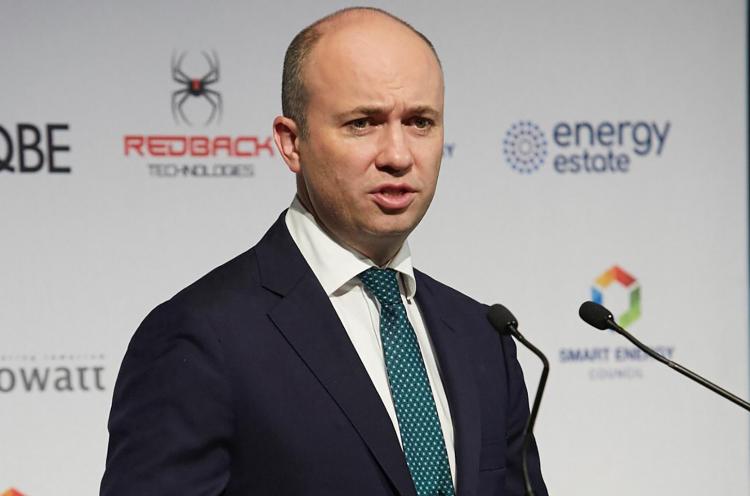
I begin by acknowledging the traditional owners of the land, the Gadigal people, and pay my respects to Elders past and present.
Can I also take this opportunity to acknowledge the incredibly brave men and women out there on the front line at the moment fighting these horrific bushfires.
Let’s not beat around the bush this morning and let’s call it for what it is.
These bushfires have been caused by extreme weather events, high temperatures, the worst drought in living memory - the exact type of events scientists have been warning us about for decades that would be caused by climate change.
Can I take this opportunity to acknowledge some very important and special people that are participating in today’s events. The former Leader of the Opposition Dr John Hewson AM and our former Prime Minister Malcolm Turnbull.
Both have made an immense contribution to Australian public life.
I particularly want to acknowledge Malcolm Turnbull’s leadership in relation to climate change and building a more sustainable energy system.
Future generations will be forever grateful for his leadership in creating Snowy Hydro 2.0, a visionary scheme that will help secure affordable, renewable and reliable power for decades to come.
Furthermore, as an avowed Republican, I share his hope that it can be formally opened by an Australian Head of State!
Ladies and Gentlemen, there has been a lot of talk since the federal election about ending the climate wars.
I think that that talk has been misplaced.
It’s not time to end the climate wars.
It’s time to win the climate wars.
Until recently, since Margaret Thatcher raised the issue of climate at the United Nations 30 years ago, taking action on climate change has always involved a cost.
But taking action to reduce our emissions today is not about a cost that we are morally obliged to pay, it’s about taking an economic opportunity that we would be negligent to miss.
Renewables today are the cheapest form of new generation.
But more importantly they can produce electricity at close to zero marginal cost.
Already there are days in NSW, and indeed in other States and Territories across the nation, where the price of electricity is below zero.
This is a huge opportunity for Australian consumers. We are already seeing mums and dads across the country installing solar panels on their roofs. Not because it is good for the environment – which it is. But because it saves money on their bills – it makes economic sense.
But the opportunity that renewables provides households extends to every part of our economy. In how we fuel our cars, in how we manufacture steel, in how we produce cement, in how we power our ships that are the basis of trade all around the world.
All of that is going to change because renewables offer nearly no cost energy.
Recently our Chief Scientist Dr Alan Finkel released his report into the opportunity of hydrogen.
On a conservative analysis, hydrogen could add between $11 and $26 billion per year in additional GDP to the Australian economy by 2050. That’s bigger than the current export value of thermal coal to the national economy.
But most importantly Dr Finkel identified that Australia can produce up to 50 per cent of the world’s hydrogen needs.
This isn’t just an opportunity to be the Saudi Arabia of solar. It’s an opportunity to be the Middle East of energy.
But this is not an opportunity that is going to wait for us.
Only two weeks ago I was in the Netherlands. The north of the Netherlands has been a major producer of gas for Europe but recently they have decided to stop gas production because of the earthquakes associated with its extraction.
They have decided to use their expertise and transition to hydrogen and they said to me they intend to build more than 100GW of renewables over the next two decades to help get there.
Now we are far better placed than the Netherlands to be an energy superpower. We have the land, the wind and the solar as well as the supply lines, expertise and infrastructure.
We cannot allow ideology and politics to get in the way of our clear path to secure our economic prosperity, let alone the health of our planet for generations of Australians.
To those vested interests and ideologues who want to stand in the way of this transition, I say enjoy your Kodak moment because the energy iPhone is on its way.
Going for hydrogen first requires us to build the renewables that will deliver us the cheap energy that we need.
The benefit of overbuilding renewables is that even if the hydrogen play doesn’t come off, smart devices that allow families and businesses to consume electricity when it is cheap will mean that building the renewables that will underpin our grid will be a no regrets move.
Now that’s the vision and I have recently announced the first step in our plan to get there.
Last month, I launched our State’s first Electricity Strategy.
It’s a plan to create a competitive, low-cost market that delivers resilient energy supply while putting downward pressure on electricity prices.
It’s a roadmap of how the Government will work with the private sector, energy market institutions, households and businesses to secure a sustainable electricity future for our State here in NSW.
And it will drive $8 billion of private investment and support 1,200 new jobs, mostly in rural and regional New South Wales.
It will also have the added benefit of driving down household energy bills by up to $40 per annum.
To deliver these outcomes the strategy will focus on four key actions.
First, we’ll deliver Australia’s first coordinated Renewable Energy Zone.
On present settings, perhaps only one in 20 proposed renewable projects will get up.
In an economy that’s crying out for energy, as Malcolm Turnbull would say, that’s just nuts.
Process must always serve the public interest.
So we’ve decided to change the application of the National Electricity rules in a region of the State’s central west to create a 3,000-megawatt renewable energy zone, the first coordinated area of its kind in Australia.
Renewable Energy Zones will play a critical role in delivering the bulk energy supply we need to replace NSW’s traditional coal base over the next two decades.
We will provide certainty to generators that the network capacity is there to support their projects and allow for the integration of modern technologies such as storage and system security equipment.
Second, we’re giving incentives for households and businesses to save energy, especially at times of peak demand.
We’re folding the Energy Savings Scheme into a bigger and better scheme called the Energy Security Safeguard, to support households and businesses to invest in technologies which save energy and reduce demand. This will mean that when we build the renewables, our households and businesses are ready to take advantage of the cheap energy they produce.
We expect participants to save around $1.9 billion on their energy bills as a result of this initiative.
Third, we’re promoting the development of new electricity generators.
We’re working on a generation framework that promotes investment in bringing new, lower cost and firmed generation into the NSW market before existing power stations close.
And finally, we’re bolstering the State’s energy resilience by setting one of the strongest electricity capacity targets anywhere in the Western World.
Now this plan is the beginning not the end. Because the end is to see our State at the centre of a new global energy order, powered not just by wind – which the Europeans have their fair share of – but by the resource that our vast country is best known for – and that those Northerners wish they had more of – our sun.
In addition to our Electricity Strategy, in the coming weeks and months we will also release our Net Zero Plan. The first fully funded plan in the nation to achieve our net zero emission goals.
Ladies and gentleman this is how we will win the climate wars.
The ful speech can also be viewed on the website of the Department of Planning and Environment
